

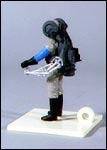
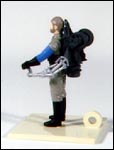
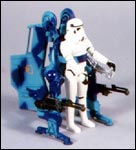
Conceptual prototypes of this kind were generally created by hand, by someone who was proficient at scratch-building models, and who could bring a number of other techniques to bear on his work. Among these techniques were kit-bashing, a process by which a model maker scavenges parts from pre-existing products such as toys or model kits; vacu-forming, which allows one to produce thin plastic parts of odd shapes and sizes; and a relatively crude form of sculpting or carving, often done quickly using a medium such as epoxy putty. But don't look at this list as limiting; in truth, virtually anything could be used in creating one of these things, and any number of techniques might be employed-- as long as it was relatively inexpensive, fast and yielded a visually appealing prototype. (Well, maybe "appealing" is the wrong word-- some of these things look like trash.)
Why, you ask, were concept models created? Generally they were created in order to sketch out Kenner's idea for a toy in three-dimensional terms. It's one thing to represent an idea on paper, where contours and action features must be imagined, and quite another to render it as a full-scale working mock-up, which can be held and examined as an honest to goodness toy. Often during the process of creating a concept model modifications and improvements would suggest themselves, and these could then be incorporated into the product. Legal experts and engineers would examine the model too, in order to determine the techniques that would be required for mass-producing the product, and to consider what, if any, safety concerns its structure posed.

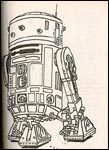
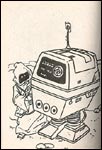
But concept models were also used for photographic purposes. Keep in mind that it typically takes a full year for a company to go from concept to mass production on a toy. And quite often photographic representations of it are needed before the production process has even hit full stride. While the buying public doesn't need to see the product until it's nearly ready to hit store shelves, wholesale outlets do, as do the toy company's foreign affiliates. Photographs of concept models were even used internally, Kenner having employed them in creating "spec sheets," documents which specify the general look, features and shipping requirements of a given toy.
The upshot of this early need for photographic samples is that many images of concept models ended up being used in a variety of printed sources. Indeed, collector knowledge of this genre of prototype is based almost exclusively on what has appeared in photographs featured in Kenner literature, from the aforementioned spec sheets to catalogs; depictions of concept models have even turned up in Canadian coloring books! The purpose of this article is to review some of the prototypes that fall under the heading of concept model. As I think you'll quickly come to understand, these items are unique, rarely seen and sometimes even hilarious.
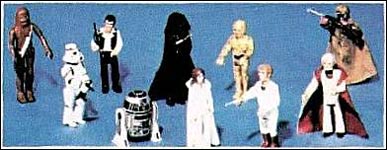
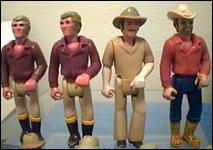
Action figures are the most popular and valuable of all Kenner collectibles, so it's natural that we begin with them. The earliest known conceptual action figures hail from the first series of 12 that Kenner released in 1978. As far as I know, only one photograph of these very early prototypes exists; it appeared in a late-70s advertisement issued by the Meccano company, the distributor of Kenner-developed Star Wars product in France. Unfortunately, the photo is small and of poor resolution; and yet it gives us a good idea of how these prototypes were created. Most of them appear to be heavily modified figures from the Fisher Price series known as Adventure People. Remember Adventure People? They were toy renditions of real-world professionals like fire men and astronauts, which Fisher Price sold with vehicle and playset accessories. And they were influential, too: Although Kenner's Star Wars line often gets the credit for popularizing the 4-inch action figure, it was actually the 1975 introduction of Adventure People by Fisher Price that heralded this revolution in toy scaling. Anyway, take a close look at the Han Solo, C-3PO, Luke Skywalker and Ben Kenobi figures featured in this photo. Notice in particular the slightly bent left arm that is found on each. This is an Adventure People hallmark, and it tells us that Kenner used this popular line of 4-inch figures as the basis for their mock-ups. My assumption is that clothes, armor and other body details were added to each Adventure Person with epoxy putty or a similar product; the two parts of the putty were simply mixed, applied to the figures and then sanded and carved into the desired shapes. However, I'm not sure what the heck the R2-D2 was made from; it's likely that it was scratch built from styrene and found objects. As for the Darth Vader, Stormtrooper, Chewbacca and Princess Leia, your guess is as good as mine. It's likely that they too were constructed from Adventure People figures, albeit ones without the telltale bent arm, but the photo just isn't good enough to convey this with any certainty. And yet it is good enough to tell us where Kenner was headed with these figures. The familiar traits of the released figures--the vinyl capes, slide-out light sabers and general color schemes--were all firmly in place even at this early point in development.
You'll notice that I didn't mention the crazy looking Tusken Raider figure featured in this earliest photo. This is because better photos of the prototype exist in other sources. Specifically, it appears in a catalog photo along with similar mock-ups of the Jawa and Death Squad Commander figures. Appearing perhaps most notably in the 1978 retailer catalog of the Australian Toltoys company, this photo is of a much better quality than the one mentioned above. In it one can clearly see that the Death Squad Commander is based on an Adventure People figure, while the Tusken Raider and Jawa are, well, indeterminate lumps of cloth and putty. Seriously, I'm not sure what the basis for either of these things is. I suppose the hands of the Raider suggest yet another Adventure Person modification, but that Jawa is downright perplexing; it looks like a midget bag lady with a hunchback. Of course, despite their poor appearances, the Raider and Jawa are notable for their cloth garments. As you all well know, the Jawa debuted with a vinyl cape and then was quickly re-issued with a cloth one, while the Raider featured a vinyl accessory for as long as it was available. What this photo indicates is that Kenner started these figures off with cloth capes and then changed them to vinyl prior to production. (As an aside, it's worth pointing out that, according to the people who worked on these figures, the cloth robe of the mock-up Jawa was made from an old sock!)
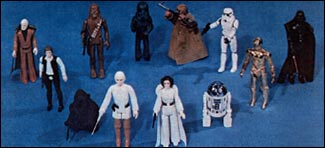
But what about that Death Squad Commander? You've no doubt noticed that it looks nothing like the mushroom-helmeted, stiff-standing Imperial lackey we all know and love. On the contrary, it looks like a painted-black version of the Stormtrooper mock-up from the first photo we talked about. Now, one possibility is that it's supposed to represent a cancelled TIE Pilot, a figure Kenner didn't get around to producing until 1982. I don't think this is completely out of the question. But it's also possible that Kenner simply didn't have a mock-up for the Death Squad Commander available at the time the photograph was taken, and so they simply painted their old Stormtrooper mock-up black and used it as a stand in. Whatever the case may be, it's referred to as a Death Squad Commander in the Australian catalog. (Note: images of these figures can also be found in the 1978 Toy Fair catalog, where they appear on a couple of mock-up store display prototypes, seen here and here.)
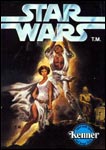
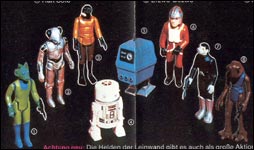

The third and perhaps most famous of the photographs showcasing concept models for action figures is found most notably in a German in-pack catalog. It displays the second wave of eight figures issued by Kenner in 1979. In the photo, Greedo, Snaggletooth, Walrus Man and Hammerhead, are all represented by what appear to be painted hardcopies. (The Snaggletooth and Greedo are probably the very hardcopies found here and here.) These four creatures, remember, had been released in late 1978 as an exclusive of the Sears company, and so they were pretty far along in development at the time this photo was taken. However, the other four figures shown in the photo--Luke X-Wing, Power Droid, R5-D4 and the Death Star Droid--are obviously early mock-ups. In fact, the Death Star Droid and Luke look a little like C-3PO and Corky from Life Goes On in bad Halloween costumes. This is easily explainable: The Death Star Droid was made from the body of a C-3PO figure and, as Star Wars enthusiast Alex Newborn has discovered, the head of a praying mantis model kit; while the Luke is yet another Adventure Person figure, this one mocked up to resemble the ugliest X-Wing Pilot who ever lived. I should also mention that the Death Star Droid is one of the very few mock-up figures to have made it into the hands of a collector: It surfaced during the mid-90s and currently resides in a private collection. As for the other pair of figures from this group, R5-D4 and Power Droid, they appear to have been mostly scratch built, with a standard R2-D2 figure serving as the basis for R5's body.
After 1979 no action figure concept models are known to have been created. It's likely that Kenner continued to produce figure mock-ups during the '80s, but since we have no photos with which to prove this, it's impossible to discuss them. However, 1979 saw the appearance of what is easily the most famous of all conceptual figures, and possibly the most notorious Star Wars prototype, period: The kit-bashed rocket-firing Boba Fett. I don't want to take up too much space discussing this figure, because quite a bit has already been written about it, most notably in the write-up found here. Suffice it to say that it was pieced together by Kenner model makers from parts scavenged from Kenner figures already in production: C-3PO provided the torso, the Death Squad Commander the legs, and the Stormtrooper gladly donated his arms for the cause. Yes, this was a real Frankenstein of a figure. But what I find even more interesting is the source of this prototype's rocket-firing mechanism: As discovered, it was drawn from a Mattel Shogun Warriors figure which Kenner's model makers found and adapted to their evil purposes-- namely, shooting the eyes out of small children.
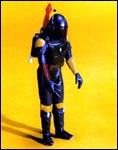
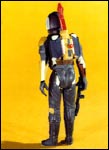
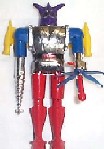
Well, that takes care of the action figures. I guess our next logical step would be to tackle those accessories that were made to be used with these figures-- action figure toys like vehicles and playsets. I'm not going to detail every single concept model of a figure accessory known to have been made, because it'd seriously take too long (a ton were photographed and appeared in catalogs); I'm just going to touch on a few of the more interesting examples.
Some of the most well-known of all vehicle mock-ups appeared on the reverse of the debut action figure blister card. Yep, two of the vehicles you see pictured on your 12-backs are painted renditions of the first three Star Wars vehicles to have been mocked-up by Kenner: the X-Wing Fighter, TIE Fighter and Landspeeder. (For some reason, the Landspeeder on the 12-back looks to be modelled on the production version, not a concept model.) I once had the pleasure of speaking with the man who built the Landspeeder model, and, according to him, each of these three models was assigned to a separate Kenner model maker. In order to liven up their work, the men made a race out of their assignments-- the first to finish his model won. But Kenner had only just decided to produce Star Wars action figure toys at that point, and there was little in the way of Lucasfilm reference material available at Kenner's headquarters. So the trio had to attend the movie several times, making sketches of their respective vehicles throughout the presentations. Then, in order to build their models, they scavenged parts from a wide variety of sources, including off-the-shelf model kids. If you look closely at the Landspeeder model, you'll notice that the outboard pods look a lot like jet engines. Well, that's exactly what they are, the model maker having pulled them from an old 747 kit.
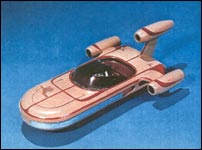
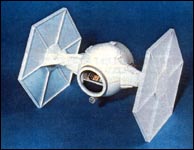
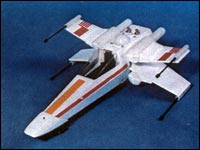
The differences between these three early models and their production counterparts should be pretty obvious. But, obvious or not, they indicate something important: that Kenner's plans for these toys were modified during development. The X-Wing, for instance, features two buttons, not one, on its rear portion. Was the vehicle intended to make two different electronic noises? And check out the hood of the Landspeeder. It has a small handle on it, undoubtedly to allow kids to easily lift the hatch. As most of you probably know, this was later changed to a button, which when pushed would automatically pop open the hood.
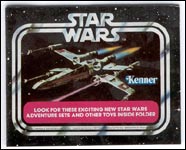
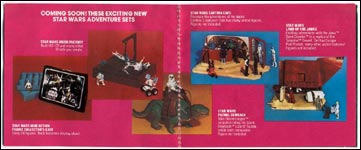
Soon after this original trio of mock-ups was depicted on the Star Wars 12-back, one of the most familiar sources of photos of concept models began to appear inside the boxes of Kenner products. I'm referring to the second version of the X-Wing Fighter in-pack catalog, the one with the pink-framed advertisement for new Star Wars toys on its cover. In the pages of its pink middle section are photos of several mock-ups representing Kenner's second round of action figure toy releases, including the Droid Factory, Land of the Jawas, Creature Cantina and Patrol Dewback. The playsets should be easily discernible as crude models: they consist of vacu-formed or scratch-built plastic bases, and, in the cases of the Cantina and Land of the Jawas, apparently hand-made backdrops that only vaguely resemble their production counterparts. Note that the Cantina employs an interesting red-and-blue color scheme; this also appears in the concept artwork of the playset seen here.
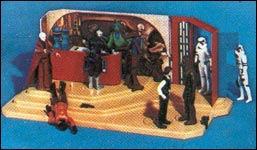
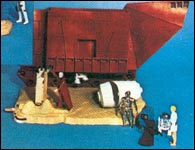
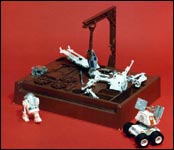
But the coolest concept model featured in this in-pack booklet is surely the one representing the Patrol Dewback. To call it a truly bizarre piece of engineering would be to understate its weirdness. Apparently made by hand, possibly with the aid of some toy dinosaur parts (and possibly some hideous form of genetic engineering), this is a sauropod unlikely to strike fear into the hearts of even the most timid of Tatooine miscreants. What, you ask, is the deal with this thing? I don't know. Why is it making a kissy face? I don't want to know. All I know is that it if it doesn't outwardly resemble the production toy, it does encompass most of its notable features, namely the removable saddle and reins, the dorsal figure hatch and the movable head-- though this prototype's head seems designed to bob rather than move laterally as the production toy's did. And I'd be remiss if I didn't mention those false legs stretching down from the saddle. It's a little known fact that Stormtroopers weren't merely feared mercenaries, they were also the best hockey goalies in the galaxy.
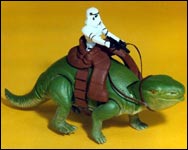
Photos of this Dewback mock-up also turned up in a one-of-a-kind album of late-70s Kenner spec sheets, made so that toys which were then in development at the company could be examined and discussed internally amongst the Kenner staff. Although this album was never available to consumers, photos of its contents can be found in our gallery devoted to Product Concepts. A large percentage of the toys depicted on its pages are concept models. The kissy-face Dewback appears in it, as does the Droid Factory from the aforementioned in-pack catalog. But more interesting are the several models which are unique (or close to unique) to the album. These include a Millennium Falcon, which was made of styrene and was one of two models built in the model shop for the original Millennium Falcon toy. The model maker assigned to the project built it out of styrene sheet stock and vacuum forms. This project took 12 weeks to complete! This styrene model features stickers rather than molded detail along its central portions. There's also a similar mock-up of the Jawa Sandcrawler. Both of these prototypes clearly echo the forms and features of their production counterparts, yet their nature as hand-made models is also readily apparent
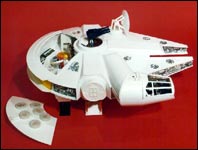
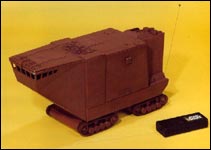
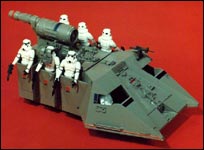
But even more interesting in my opinion is the Imperial Troop Transport model also found inside the spec sheet album. It's really one of the coolest looking of all known concept models, in large part because it's so distinctive vis-a-vis the toy eventually sold in stores. Although it features the six troop compartments found on the sides of the production version, and the accompanying text mentions that it includes the familiar sound replay feature, its overall shape is pretty unique. For one thing, it has a pointed, plow-like front rather than the squarish one of the production toy. For another, it includes a strange feature located on the top of its tail portion, which is obviously made from an X-Wing fighter engine. And once again a look at a concept model tells us something important about the development of a production toy. In this case, we find that the suspension system of the Imperial Troop Transport was originally planned to be spring-loaded, similar to the one employed on the Landspeeder-- a sharp contrast to the plain old wheels found on the production toy. Why Kenner so radically changed the appearance and locomotion system of this toy prior to production is anyone's guess, but it's certain interesting to see it in this early form.
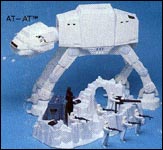
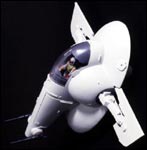
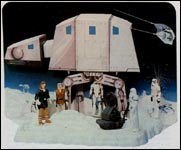
Other action figure toys to have been photographed in concept model form include the AT-AT pictured on the reverse of the 41-back blister card, which appears to have been built mostly from styrene; a Snowspeeder that looks darn close to the released product; an early rendition of the Hoth Ice Planet Adventure Set, complete with mocked-up backdrop and radar laser cannon; a Twin-Pod Cloud Car that, due to its all-gray paint job, suggests it was based on black-and-white photos; and a crude version of the Dagobah playset, showcased in an Australian catalog, which looks vaguely like some hitherto unknown class of Pre-Columbian ceramic. Models which have never been showcased in printed literature, but have nevertheless found their way into the hands of collectors, usually in the form of photos, include a cool rendition of Boba Fett's Slave 1 and a very intriguing version of the Jabba the Hutt playset. Featuring an all-red pipe, an apparently hand-made throne and, surprisingly, no Salacious Crumb, the Jabba set is most notable for its inclusion of an early conceptual version of the Hutt figure. Some examples of this figure have turned up in a roto-case vinyl format, suggesting that the figure was at one point planned to be made of this flexible material.
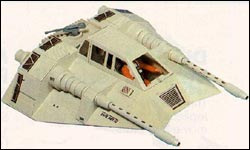
Still other concept models are known to exist, some of which sound pretty incredible. The Ewok Village model for instance is said to have been made almost entirely from sticks, which the model maker found in his own backyard! But alas, I either have never seen or don't have photos of these rumored prototypes, so I thought it best to leave them out of this article.
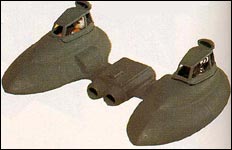
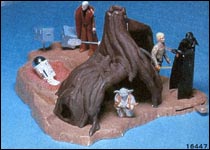
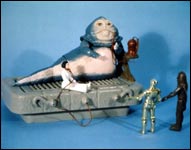
Well, this look at concept models is shaping up to be pretty long, so I'm going to leave the second part of it for another day. It'll cover concept models created for large-size figures, Micro Collection toys, miscellaneous products and unproduced items. It's interesting stuff, so if you enjoyed this piece, look for its continuation to appear on the Archive soon.
![]() Back to Special Feature Menu
Back to Special Feature Menu
 Back to SWCA Main Menu
Back to SWCA Main Menu